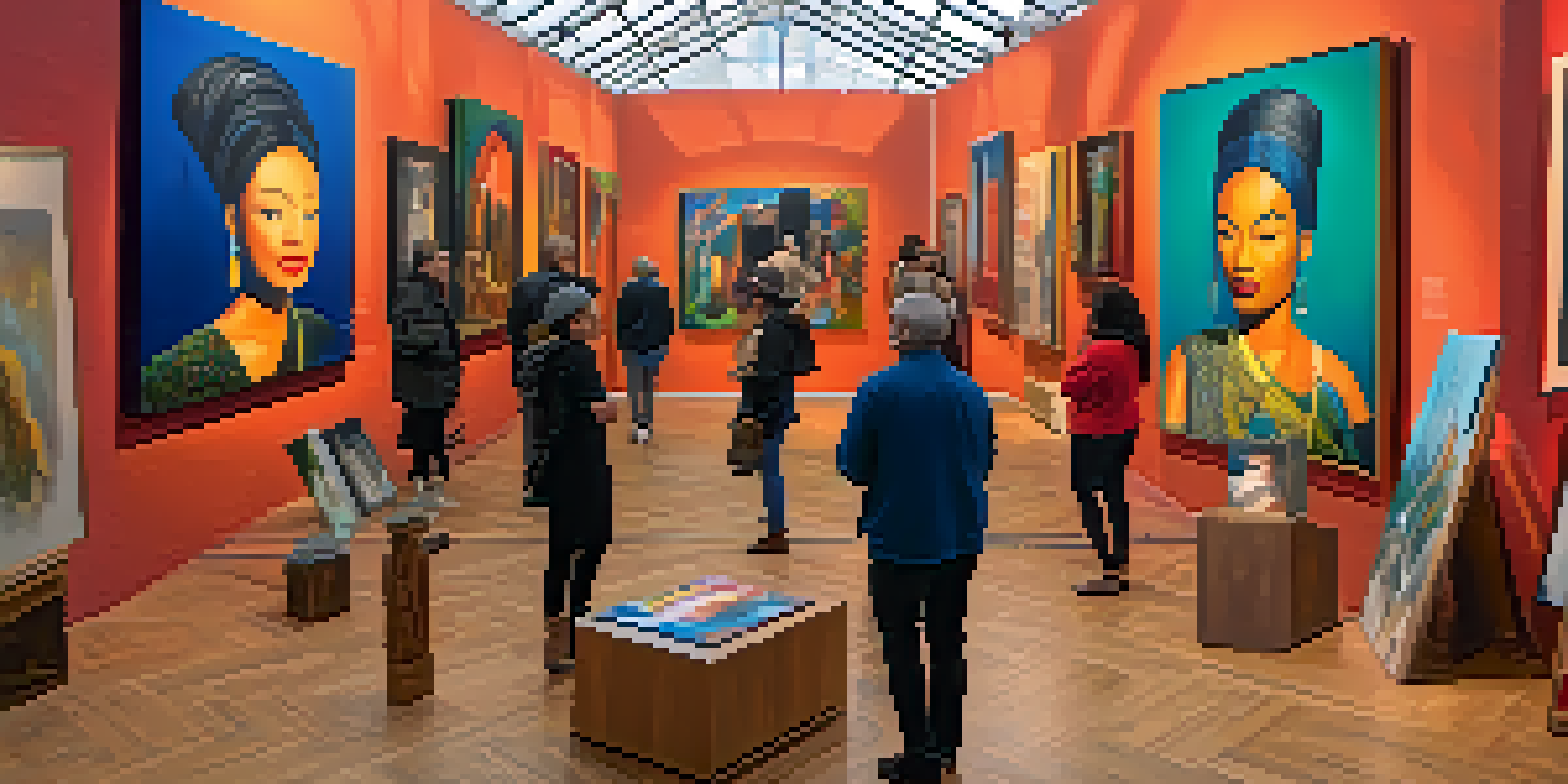Exploring Cultural Identity Through Contemporary Visual Arts

Understanding Cultural Identity in Visual Arts
Cultural identity is a multifaceted concept that encompasses the beliefs, values, and traditions that define a group. In contemporary visual arts, artists often explore these identities, reflecting their personal experiences and cultural backgrounds. This exploration helps audiences connect with diverse narratives, promoting empathy and understanding across different cultures.
The Role of Artists in Cultural Expression
Artists serve as cultural narrators, using their mediums to convey stories that might otherwise go unheard. Through paintings, sculptures, and installations, they express their perspectives on identity, belonging, and heritage. For instance, an artist from a marginalized community may utilize their work to challenge stereotypes and highlight the richness of their culture.
Artists Reflect Cultural Narratives
Through their work, artists explore and express their cultural identities, fostering understanding and empathy among diverse audiences.
Visual Arts as a Reflection of Society
Contemporary visual arts often mirror the societal dynamics of the time, providing a lens through which we can examine cultural identity. Artworks may address current issues such as immigration, globalization, and social justice, prompting viewers to reflect on their own identities and the world around them. This dialogue between art and society enriches our understanding of cultural nuances.
The Impact of Digital Media on Cultural Identity
The rise of digital media has transformed the way artists express their cultural identities. Platforms like Instagram and TikTok allow artists to reach global audiences, sharing their work and stories with a click. This accessibility encourages cross-cultural exchanges and collaborations, ultimately redefining what it means to belong to a particular culture.
Digital Media Transforms Expression
Platforms like Instagram and TikTok enable artists to share their cultural stories globally, redefining cultural belonging.
Case Studies: Artists and Their Cultural Narratives
Examining specific artists can offer deeper insights into the connections between art and cultural identity. For example, Kehinde Wiley’s portraits challenge traditional representations of Black masculinity, while Frida Kahlo’s self-portraits reflect her Mexican heritage and personal struggles. These case studies illustrate how individual experiences shape collective cultural narratives.
Art Exhibitions as Cultural Platforms
Art exhibitions serve as vital platforms for showcasing cultural identities and fostering dialogue. Events like the Venice Biennale or local community art fairs often highlight diverse artists, giving voice to underrepresented cultures. By creating spaces for these expressions, exhibitions enhance cultural appreciation and encourage critical conversations about identity.
Challenges in Cultural Representation
Artists face the complexities of misrepresentation and cultural appropriation, necessitating a balance between authenticity and respect for the cultures they depict.
Challenges in Representing Cultural Identity
While contemporary visual arts provide a rich avenue for exploring cultural identity, challenges remain. Misrepresentation or cultural appropriation can undermine genuine expressions of identity, leading to controversy and conflict. Artists must navigate these complexities, ensuring their work honors the cultures they represent while also being authentic to their own experiences.
The Future of Cultural Identity in Visual Arts
Looking ahead, the future of cultural identity in contemporary visual arts appears vibrant and evolving. As artists continue to experiment with new mediums and technologies, they will undoubtedly push the boundaries of cultural expression. This ongoing exploration will not only enrich the art world but also foster a deeper understanding of our shared humanity.